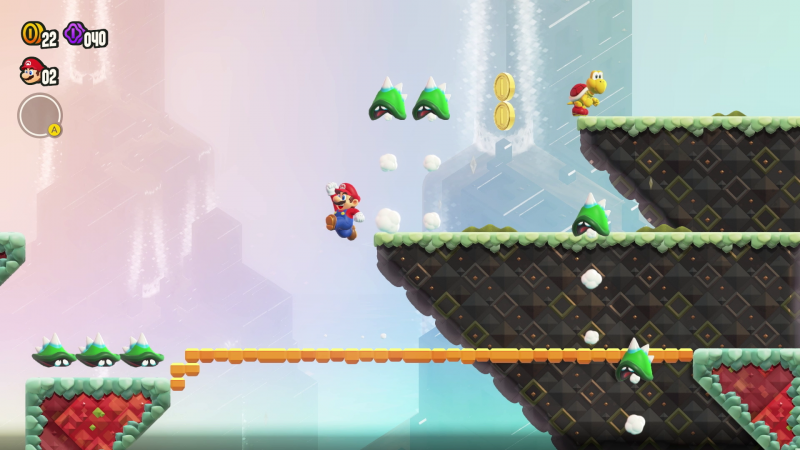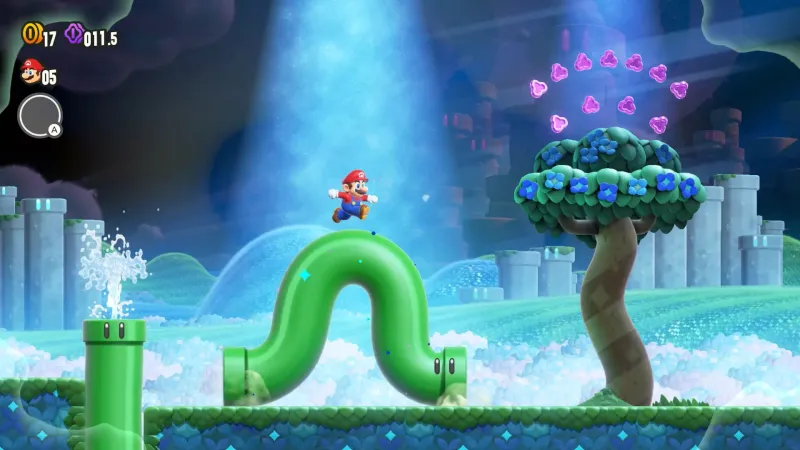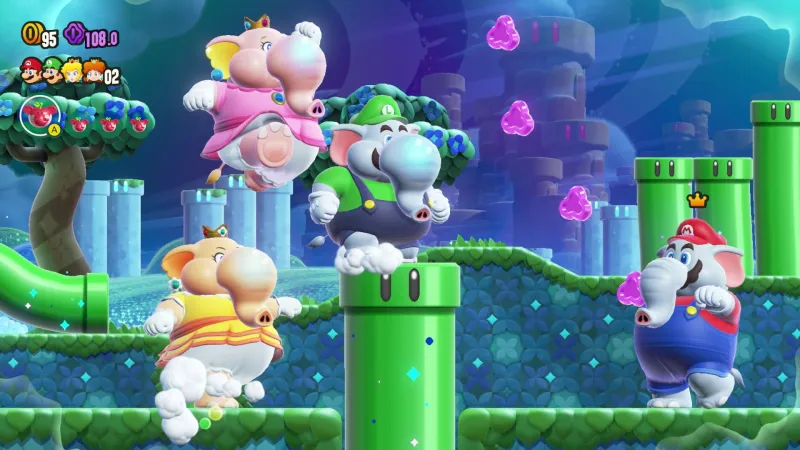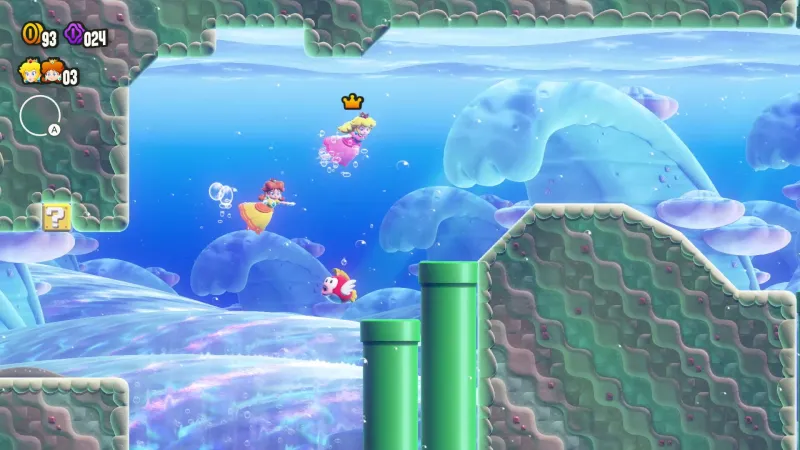
I've been playing a ton of Super Mario Bros. Wonder over the last couple of weeks (in addition to the hands-on I had as a part of our current cover story), and the review embargo has officially lifted. However, due to restrictive embargo guidelines that don't allow us to discuss large portions of the game, we have opted to hold our final review until the game is available for purchase. With that said, I did want to share some brief thoughts within the confines of the embargo.
I've loved my time with Super Mario Bros. Wonder. The game is aptly named for a title that instills a strong sense of wonder around every corner. Each stage introduces new gimmicks with appropriate and well-designed on-ramps, then expands on them in fun and unique ways. I truly never knew what I was getting into each time I went into a new course, and I was almost universally delighted once I started making my way through.

The Wonder Effects are the stars of the show, bringing joyful surprises each time you experience one. Whether it's a transformation of the course, your character, or a combination of the two, it was always a fun and exciting occasion whenever I found a Wonder Flower. Director Shiro Mouri told me in my discussions with him that one of his main goals with Super Mario Bros. Wonder was to fill the game with secrets and mysteries, and he has very much succeeded in that initiative. I never knew what I would encounter next, and while that is, in part, thanks to the new enemy types, power-ups, and stage conventions, the Wonder Effects kept me on my toes more than any other component of the Super Mario Bros. Wonder package.
Even outside of that novel addition, Super Mario Bros. Wonder plays extremely well. Not that Nintendo has ever given us reason to doubt their ability to craft a well-made platformer, but Wonder carries on the series' sterling reputation. Since most characters play the same, I'm certain many people will find a character they love playing thanks to their distinct expressions and animations. And whether you're talking about the new sound effects to accompany each action, the tracks that pay homage to the series' past, or the splendid all-new compositions, I never once considered turning down the volume during my playthrough. The tight controls, terrific sound design, and expressive art style combine to create an experience that appeals to all senses video games can reach.

While the bulk of my time with Wonder was done in single-player, I also had a great time with the multiplayer. Local options allow for you to play through stages with a friend (or three) on the couch through traditional co-op, while online offerings include the ability to set up course races with friends. I'm disappointed you can't do traditional co-op online (particularly when other recent games in the series accomplished it), but I had fun with the course races I took part in.
You can also activate a passive, persistent online mode, which populates ghosts in your course, including players who are currently playing in the level or have recently gone through it. When this is activated, if you lose a life, you can respawn by swimming to a nearby player or a Standee they've left behind. This helped me on a couple of occasions, but activating it also spoiled some secrets, as you can see other players' ghosts and Standees, that were invisible to me otherwise. It didn't ruin the experience, but I eventually turned it off to keep some of the mystery intact.

Keep your eyes on Game Informer in the coming days for our full review of Super Mario Bros. Wonder, as well as this week's All Things Nintendo and The Game Informer Show podcasts. In the meantime, you can check out our exclusive coverage hub right here. Super Mario Bros. Wonder arrives on Switch on October 20.
Source: Game Informer
Comments
Post a Comment